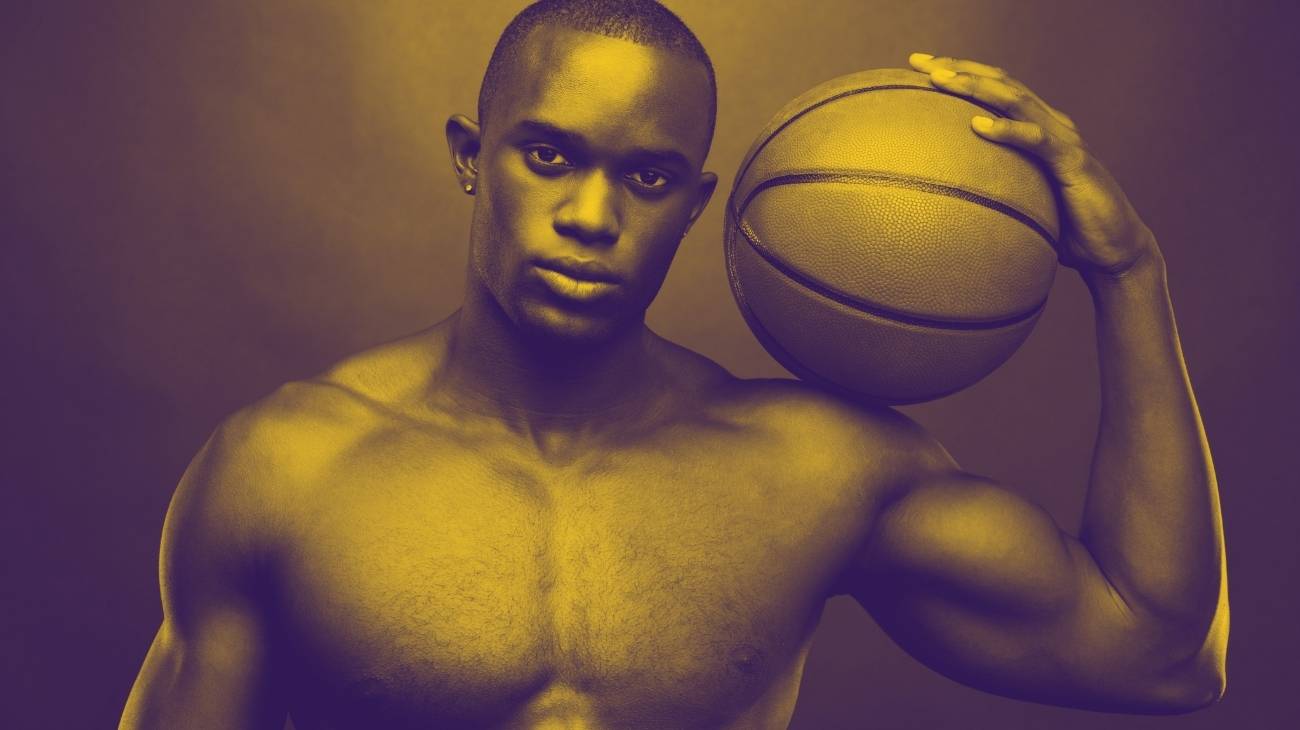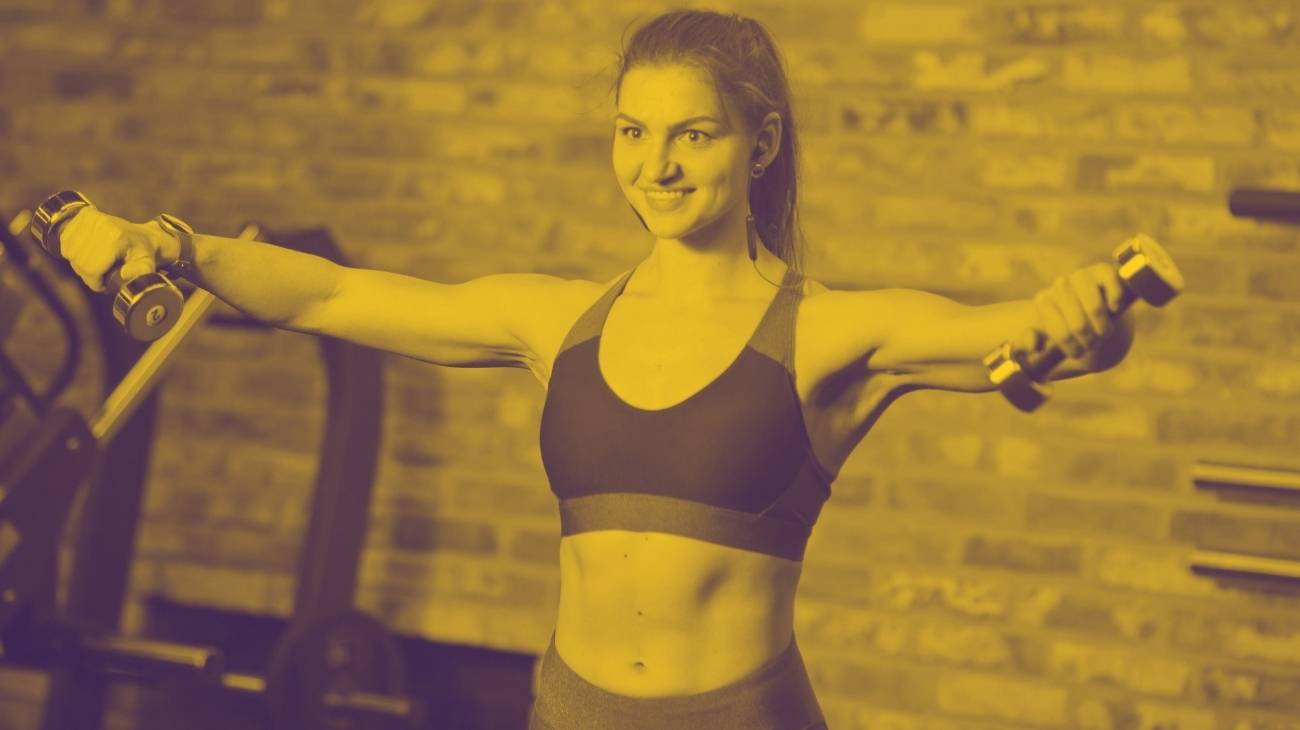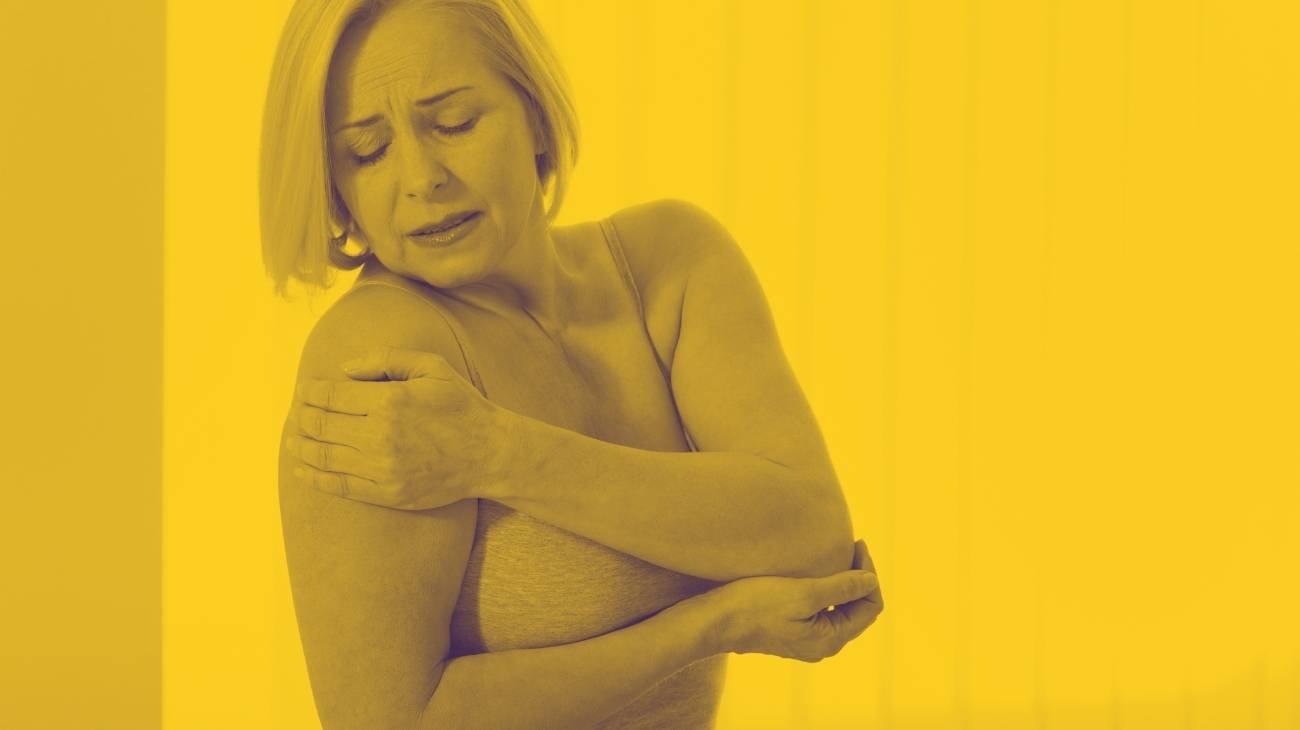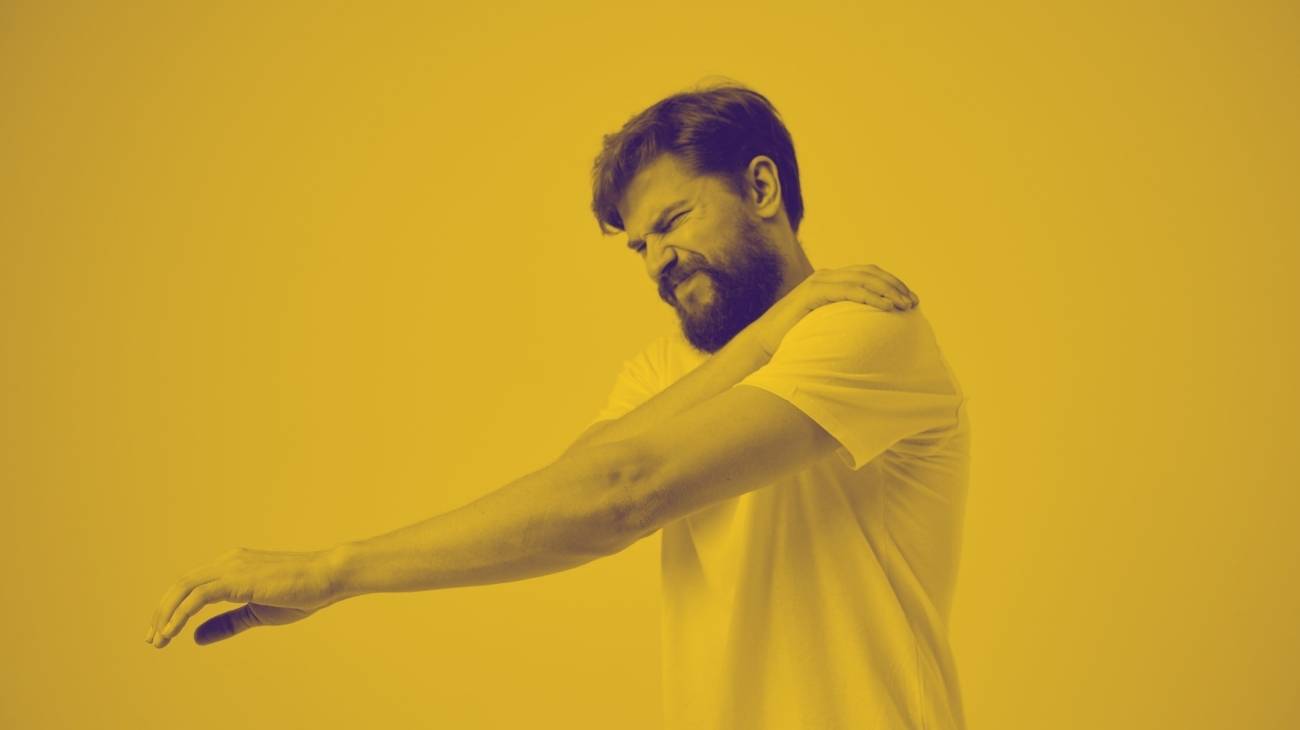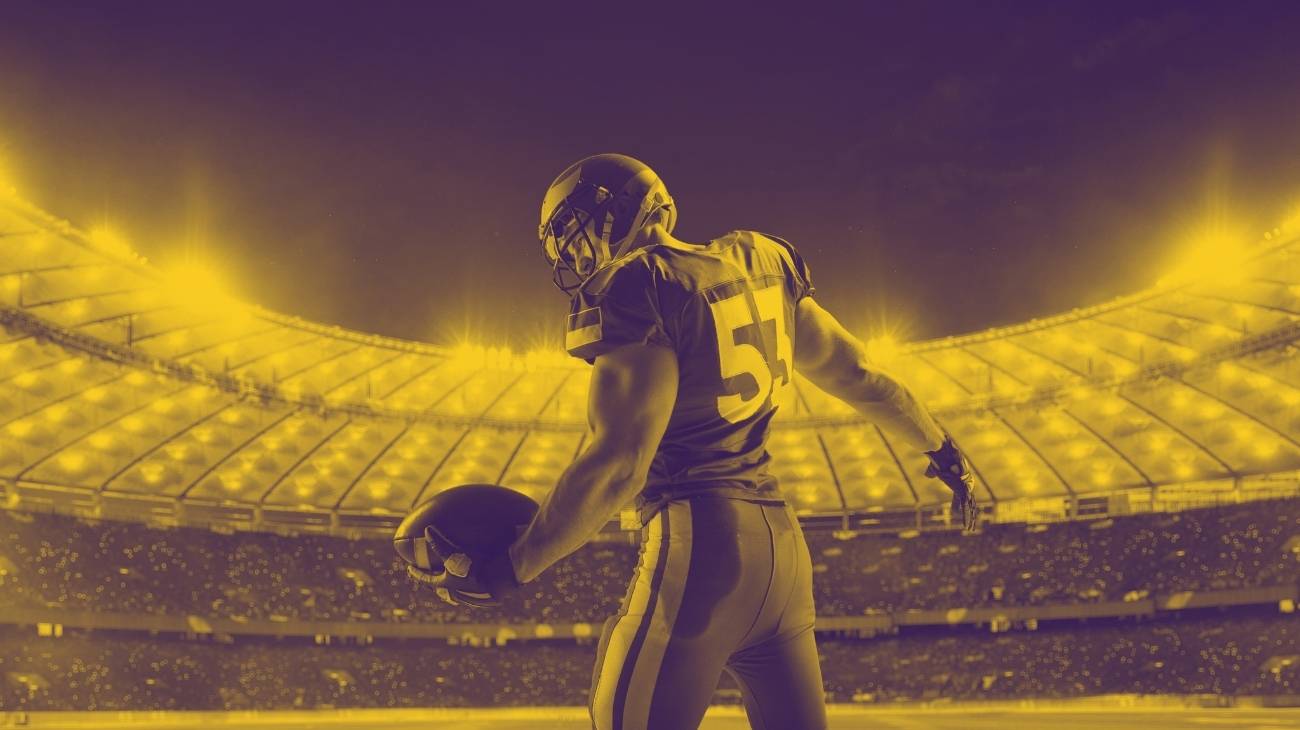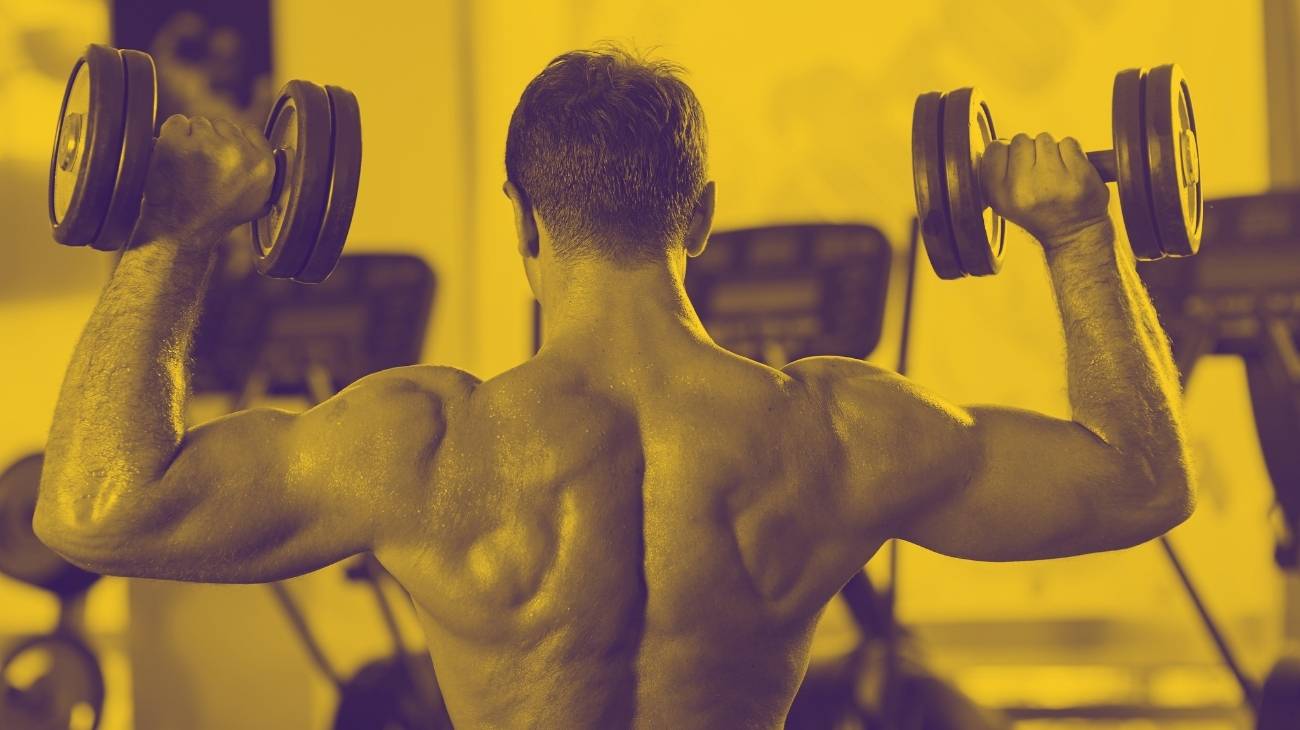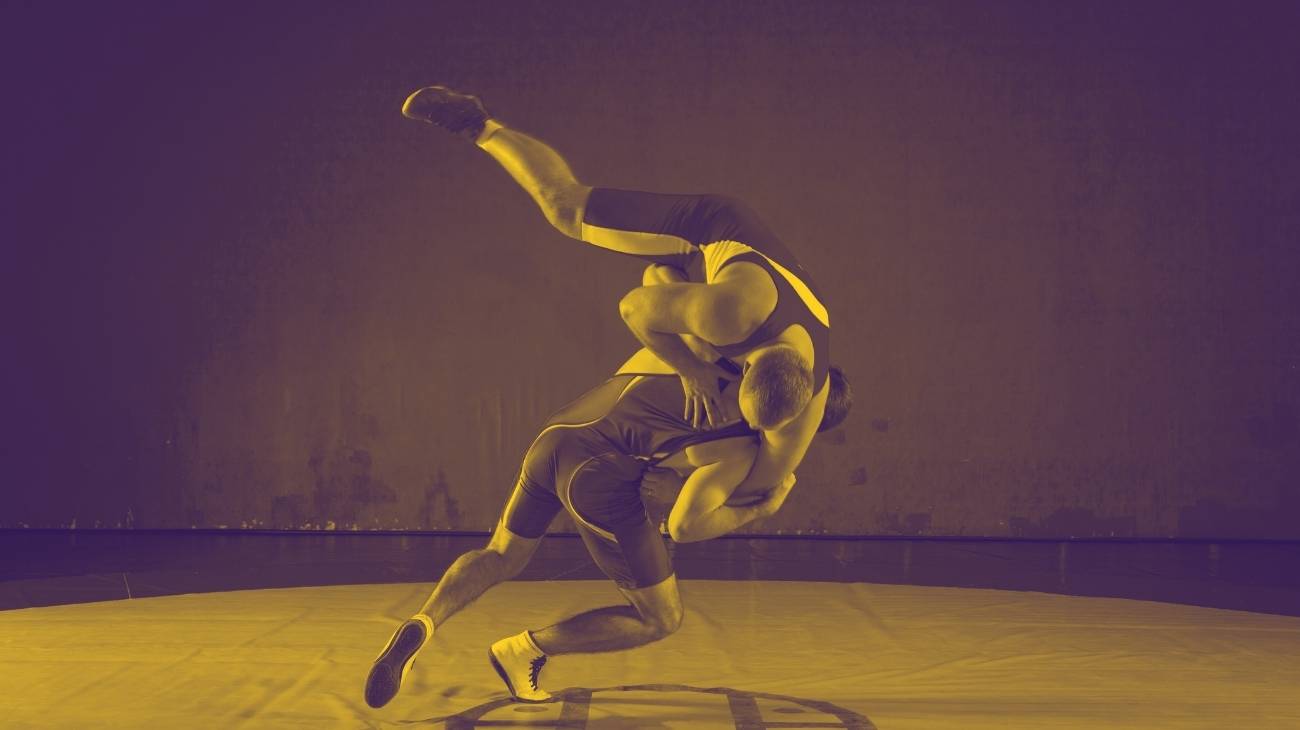- What is the best shoulder brace for fitness injuries?
- Video: Shoulder joint anatomy
- Types of shoulder braces you should know about
- What are the most common shoulder injuries in weightlifting and powerlifting?
- Buying guide: Tips on how to buy the best shoulder brace for fitness or weightlifting?
- Do compression shoulder sleeves for weightlifting really work?
Weightlifting is one of the most dangerous sports, as athletes have to lift heavy loads and train at high intensity. As a result, accidents are frequent, especially on the shoulders, because they are overused and constantly loaded.
For this reason, the use of compression shoulder braces is recommended for injury prevention and recovery. These benefits are discussed in the following article, which explains the features, types, effectiveness and more.
What is the best shoulder brace for fitness injuries?
- Sizes: One size
- Colors: 2 Options - Black, Pink
- Material: Neoprene
- Closure type: Closure with elastic straps and Velcro
- Hot/cold pad: No
- Soft and comfortable neoprene material
- Includes a user manual
- Easy one-handed adjustment
- Quality material
- Gel pad not included
- Thin material
In the manual enclosed in this offer you will find different tips that will help you improve your lifestyle to avoid future injuries. Its placement is simple and its one-size-fits-all design allows you to keep the straps in place at all times, although the strap may be too long for those with a small frame.
- Sizes: One size
- Colors: Black
- Material: Neoprene
- Closure type: Closure with elastic straps and Velcro
- Hot/cold pad: Yes
- Gel pad option
- For both shoulders
- Easy to put on
- Good protection
- Thin material
- One only size large
Thanks to the fixation and pressure it exerts on the arm, it manages to keep the shoulder immobile when you perform any type of task, including every time you practice sports. The black neoprene and the elastic bands that cross the thorax and the arm circumference generate greater stability so as not to displace the shoulder and cause more pain. Its cumbersome fit may cause discomfort in those with inflammation or advanced injury.
- Sizes: S-M & M-XL
- Colors: Black & Blue
- Material: Neoprene
- Closure type: Closure with elastic straps and Velcro
- Hot/cold pad: No
- Good fit
- Maximum support
- Diferentes tallas
- Different sizes
- Too bulky
- Gel pad not included
The circumference of the arm and the anatomical shoulder area has three perforated layers to maintain greater comfort and allow the skin to breathe. The ease of configuration generates individual fitting, but you should be aware that compression can cause the plastic adjustment clips to put incorrect pressure on the biceps and torso. Finally, consider that the different sizes indicated on the product are not always accurate.
- Sizes: One size
- Colors: Black
- Material: Neoprene
- Closure type: Closure with elastic straps and Velcro
- Hot/cold pad: No
- Two modes of fastening
- Cold-Heat pad option
- Good compression
- Breathable
- Not machine washable
- One only size
The splint comes with a pressure pad to place a hot or cold pack. In this way you will achieve therapeutic effects generated by thermal variation therapies. The Velcro strap often disturbs the area under the armpits if not positioned correctly and, in some women, can cause tightness in the bust. The support is not strong enough for sports or sleeping.
- Sizes: S-M-L-XL-XXL
- Colors: Black & Grey
- Material: Neoprene
- Closure type: Closure with elastic straps and Velcro
- Hot/cold pad: No
- Great compression and good support
- Strong adjustable straps
- Very good elasticity
- Quality material
- Gel pad not included
The adjustable straps work together with the V-shaped support of the sleeve, making the product suitable for use on any shoulder. The different sizes available generate greater stability for each type of user's thoracic build. The sleeve has three velcro straps on the inside, this helps to cover the circumference of the biceps for a better feeling of control and fixation of the shoulder. In some cases, these fastening straps do not work properly due to the tension they support.
- Sizes: XS-L-XL-XXL-XXXL
- Colors: Black
- Material: Lycra & Neoprene
- Closure type: Closure with elastic straps and Velcro
- Hot/cold pad: No
- Two adjustable straps
- Multi position
- For both shoulders
- N-Tex neoprene
- Small sizes
- Not machine washable
Its washable anatomical design, designed to absorb moisture and not damage the skin, is durable and reusable because it does not deform over time. You can choose the alignment according to your needs, but this is not always the case for all bodies, as it depends on the person's build. Keep in mind that the material is hot, so in summer or in times of high temperatures its use may be uncomfortable.
- Sizes: One size
- Colors: Black
- Material: Neoprene
- Closure type: Closure with elastic straps and Velcro
- Hot/cold pad: Yes
- Quality material
- For both shoulders
- With compression air pump
- Cold-Heat pad option
- Too bulky
Its use is very simple, you just have to place the arm inside the protector and inflate it until you get the desired support. If you are going to do sports, you should keep in mind that the space will be reduced between the splint and the arm, so it is advisable not to inflate it too much. d treatment, although this gel pack is not includeThis support is ideal for R.I.C.E. treatments, but you must take into account that the placement is uncomfortable because the seams start from the back and you will need another person when it is the turn of the diagonal straps.
- Sizes: M-L
- Colors: Black
- Material: Neoprene
- Closure type: Closure with elastic straps and Velcro
- Hot/cold pad: Yes
- Adjustable design
- Easy to use
- 3 adjustable heating levels
- Soft and comfortable material
- Needs PowerBank
- High power consumption
But this is not all, if you do not want to press the button for two or three seconds, the brace will not be activated and you can use the shoulder brace as a protector and keep the joint firm so that inflammation and pain does not increase. Batteries are not included and, if you wish, you can additionally purchase a gel pack to get the benefits of cold therapy. While the support is adequate, the instructions do not teach you how to maximize the benefits of the product.
Video: Shoulder joint anatomy
Types of shoulder braces you should know about
What are the most common shoulder injuries in weightlifting and powerlifting?
In weightlifting, muscles, joints and cartilage are often damaged due to overuse, overtraining, obesity and even degenerative damage.
The shoulders and their joints are most at risk because they guide and support the weight we lift. Therefore, it is important to know what are the most common injuries to which the athlete is exposed during the practice of weightlifting disciplines.
Tendonitis
This is an injury that affects the tendons of the shoulder joint complex and is essentially caused by excessive tension in a muscle-tendon area. The most common movements or actions that cause tendinopathy are: repetitive stretching, throwing objects, or sustained exertion.
At least two of these three causes can be found in weightlifting and fitness, especially the stretching involved in holding and lifting weights overhead, which increases pressure on the entire shoulder joint complex.
Symptoms of tendinopathy may include: inflammatory pain from pressure on the tendon, pain or discomfort on palpation, decreased strength, difficulty or impairment performing daily activities, discomfort during active movements of the shoulder, and pain when attempting to stretch the tendon muscle.
Rotator cuff injury
This type of injury can occur when the tendons that attach to the bone and muscles become partially or completely torn, or when the bursa, a smooth layer that surrounds the tendons, becomes inflamed and irritated. It can occur after a sudden movement when trying to lift something too heavy, or when the athlete falls on the outstretched arm.
The above cases often occur during weightlifting, especially if the athlete unreasonably exceeds the recommended weight for their training level and shoulder joint strength. If the individual cannot support this weight, they may fall and tear their rotator cuff, for example. If they do not fall, a partial tear of these tendons will occur.
Fracture of the clavicle
This is the complete or partial separation of the bone that connects the upper part of the sternum to the shoulder blade. They are caused by a direct blow to any point of the bone. In weightlifting, it occurs when the athlete falls or hits the weights, which of course contain a considerable amount of weight; moreover, the shoulder joint complex did not have adequate protective equipment to cushion or protect blows and falls.
The main symptoms are: Pain in the area of the fracture, great difficulty in moving the entire joint, associated with severe pain, a drooping shoulder, a grinding sound when lifting the arm, bruising, severe swelling and bumps in the affected area.
Compression of the suprascapular nerve
The suprascapular nerve is located in the upper trunk between C-5 and C-6 and crosses under the ligament. This injury is common in athletes who participate in disciplines that place a lot of stress on the shoulders and head, such as weightlifting. This nerve can be compressed by acute injury, overuse, repetitive irritation, and lipomas, resulting in atrophy of the supraspinatus and infraspinatus and subsequent weakness or atrophy of the infraspinatus.
Compression results from impingement, which can be caused by constant pulling in the shoulder position during sports activities, depression of the scapula during retraction, hyperabduction, or excessive crossing of the arm during flexion.
Dislocation of the shoulder
This injury is caused when the ball head of the humerus bone comes out of the scapula. This happens mainly when it is pushed in front of the joint with force. The shoulder is most commonly dislocated in strength sports, especially weightlifting and crossfit.
The bone may be pushed completely out of the joint, which is called dislocation, or only partially, which is called subluxation. In either case, the shoulder is pulled, pushed or rotated outward, upward or backward by a strong pushing or pulling force. The main symptoms are swelling around the joint, severe pain, inability to move the arm away from the trunk, and numbness in the muscle over the shoulder joint.
Buying guide: Tips on how to buy the best shoulder brace for fitness or weightlifting?
Weightlifters, powerlifters and fitness athletes in general are subject to unpredictable injuries and damage. Therefore, it is important to choose the right protective equipment according to the requirements of each athlete. For this reason, when choosing such an important product as the sports shoulder brace, it is necessary to take into account various aspects so that the person can achieve greater benefits for their health and performance.
Depending on the function
- Shoulder braces: Sports shoulder sleeves perform a basic function for athletes: they provide safety during any movement, be it bending, pushing or lifting. They prevent the joints and muscles from performing these movements in a way that could cause damage. With their compression, support and hold, they provide the arms and shoulders with the support they need to lift weights or perform techniques in a safe and professional manner.
- Shoulder braces for pain relief: some shoulder supports are specifically designed to alleviate discomfort in this area, as they are made of materials and shaped to be used as a therapeutic support while being comfortable and in some way directing movement and preventing further damage such as inflammation. They allow the athlete to complete their exercises without causing muscle fatigue, and the muscle can recover quickly if pain is present.
- Stabilizing shoulder supports: they exert more pressure and better distribute the weight from the shoulders to the arm, providing support and balance in the arms when lifting weights. These are very useful for people who suffer from muscle weakness and therefore cannot offer resistance.
- Rehabilitation shoulder brace: shoulder compression sleeves not only play a protective role for the athlete, but are also often recommended by professionals for early recovery from injuries sustained during sports training. Depending on the design, they help stabilize joints, muscles and tendons to speed up the recovery process, especially if the athlete is undergoing therapy or wants to resume training after a break.
Material of manufacture
This feature is important when choosing shoulder braces, because the materials used allow them to perform one function or another. The most popular is neoprene, as it is supportive and compressive and has high strength and durability, although its weakness is low breathability. Because of the latter problem, it is also common to mix in high-resistance and breathable fiber types, with different proportions of the combination depending on the intended use.
Stretch fabrics are also recommended if you are looking for extra flexibility. They're also generally comfortable against the skin, especially if you're looking for a therapeutic effect, even if they don't provide much support, but rather offer the lifter support and mobility. Some contain a gel for heat therapy.
Type of support
It's important to know your level of physical exertion, health condition and goals in order to find a solution that is functional, supportive and safe, but also comfortable. The type of support can vary depending on the design and material of the shoulder brace. Some of the most recommended for weightlifting are:
- Straps: It is common for the straps to be adjustable in the chest area to provide adequate support for the athlete and to be able to close them tightly. It is important to note that these straps do not offer a wide range of sizes, as mentioned above, they are usually adjustable.
- Velcro: can be attached to splints, straps or snaps to provide additional security, compression and support. It is very common on compression and double-sided shoulder braces. Also, these garments can be adjusted beyond their standard size, often in the form of a closure.
- Hooks: Some shoulder support have discreet hooks on the back to provide good support and improve posture. These materials are made of lightweight metal embedded in fabric, so they won't hurt or hinder the athlete.
Size
The size of the shoulder brace is an important element to evaluate. There are different ways to choose them, as they can be one-size-fits-all, such as fully adjustable, elastic straps, or they can be flexible.
However, if you want to choose a garment that fits your shoulder to ensure proper and safe compression and other contributions, you should do the following: First, measure the circumference of the arm with a tape measure. If you want to find out the circumference of the torso, you need to go from the center to the armpit, and if you want to find out the total chest circumference for the shoulder braces, you need to go from armpit to armpit.
Design
Shoulder sleeves are designed differently depending on their function: Some completely cover one shoulder with cross support, while others, like chest pads, cover both shoulders and the entire chest like a shirt. Those that provide additional support, such as bilateral models, have cross straps.
The choice of model should be based on the needs of the athlete. For example, if you are looking for a model that ensures discretion, it is advisable to choose elastic materials that fit tightly to the body. Aesthetic harmony is another important design factor. Today on the market there are custom shoulder braces, with a custom closure or even with integrated pockets.
Price
The price of shoulder braces varies greatly depending on the material used, additional features, manufacturing process and even the season in which they are worn. Although the price is an important factor when buying a shoulder brace for weight training injuries, you should not buy the cheapest model, as its quality and functionality will be much lower and it will not cover the goals effectively.
Do compression shoulder sleeves for weightlifting really work?
Sports shoulder sleeves play a fundamental role in high-intensity sports such as weightlifting, especially powerlifting, as they serve asprotective equipment during training and muscle exposure, providing support, compression and assistance during every movement. In addition, shoulder braces also provide therapeutic benefits such as pain relief, prevention of inflammation and improved circulation.
When athletes make it a habit to wear these compression garments, they maintain their health and improve the performance of muscles and joints, as they are protected from sudden movements that can cause trauma or degenerative damage from small, unidentifiable injuries.
In sports such as weightlifting, muscles are often subjected to excessive stress. Shoulder supports also help prevent long-term damage from these factors, making their use in competitions and training almost essential.









